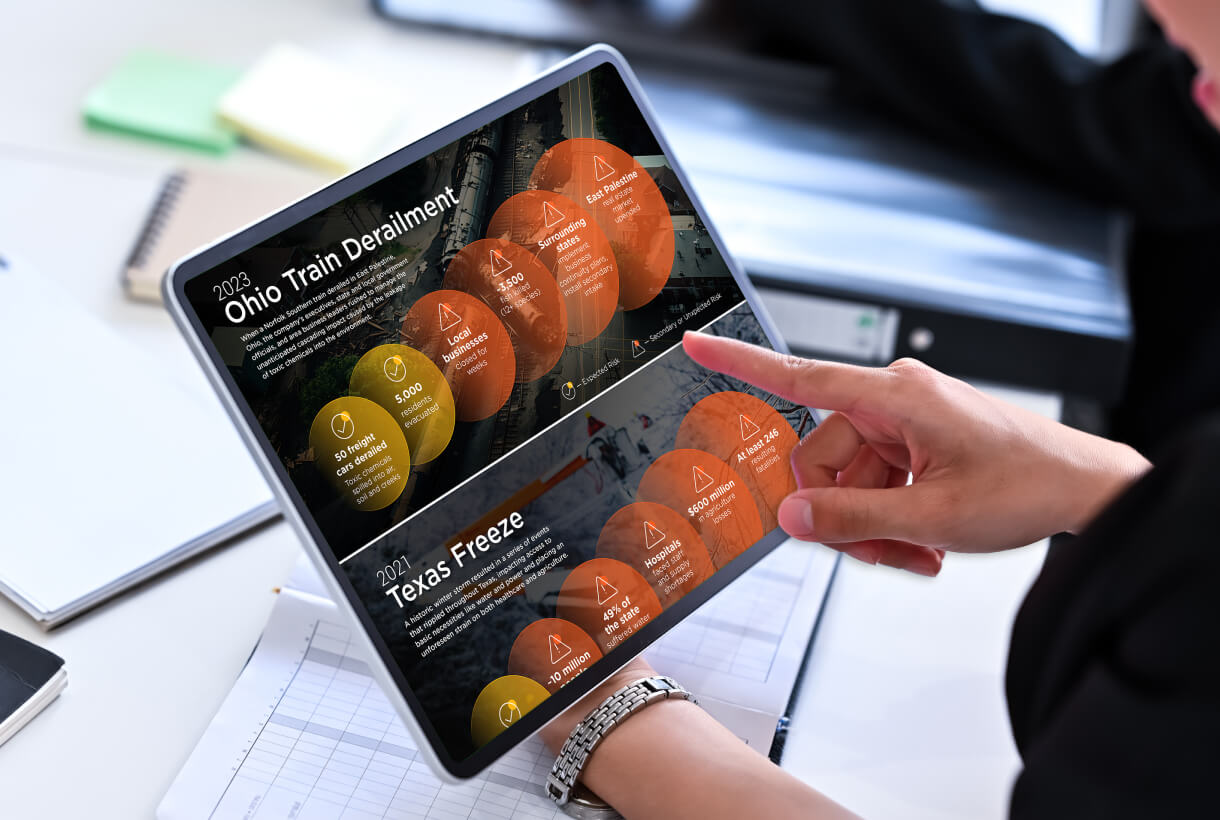Extreme flooding. Unsafe drinking water. Asbestos-related campus closures. These are just a few of the dynamic risks faced by K-12 schools across the country after natural and manmade disasters, according to USA Today. These unexpected risks are raising the stakes for government, community and educational leaders, who find it more challenging to keep schools safe.
The question on everyone’s mind is, how can schools better prepare for and manage the dynamic risks that may occur in the wake of disasters?
How Dynamic Risk Affects Schools
Dynamic risk is characterized by surprise, rapid change and secondary risks. While you may have expected and prepared for impacts in one area, you may not be ready for the cascading effects of a disaster, which can create long-tail impacts.
Consider, for example, that from 2021 to 2022, extreme weather events were up 42 percent in the U.S., as the 2023 OnSolve Global Risk Impact Report notes. For schools, these disruptions can affect everything from the academic calendar to the budget. The resulting delays, as well as both long- and short-term closings, can cause students to fall behind and teachers to struggle with keeping lesson plans on track. Those same weather events may leave parents out of work, burdened by home repairs, and unable to pay tuition and fees – either on time or at all.
With dynamic risk, anything is possible. So what now?
Dynamic Risk: 3 Examples and How to Prepare
Learn more about the unexpected ripple effects of dynamic risk and how to mitigate the impact with a proactive approach.
Expect the Unexpected: Know Your ABCs
The right strategy for critical event management – supported by powerful AI-driven technology – can strengthen your ability to support students, families and staff.
Assess your preparedness. Schools need to understand their risk profile for their location to build out their crisis plans, put the right teams in place, evaluate any training that’s needed, and ensure ownership and accountability.
Back up your plans. Effective response requires planning for multiple contingencies. Dynamic risks are inherently unpredictable, so it’s important not to be fully reliant on documented crisis plans. Make sure to build in flexibility that enables your response teams to adapt as the situation evolves.
Choose the right technology. When weather gets erratic or a manmade disaster forces a school closure, people want to know what’s going on and what they should do next. By leveraging a unified platform that includes AI-driven risk intelligence to detect physical threats quickly combined with a mass notification system that keeps faculty, staff, students and families informed, local and school officials can fulfill their obligations using one convenient interface.
Score Higher on Dynamic Risk Management
With the right technology, local and school officials can act confidently—and proactively—to keep students and staff safe and informed before, during and after a crisis.
Ready to learn how a unified platform for critical event management makes this possible? Contact OnSolve today.


